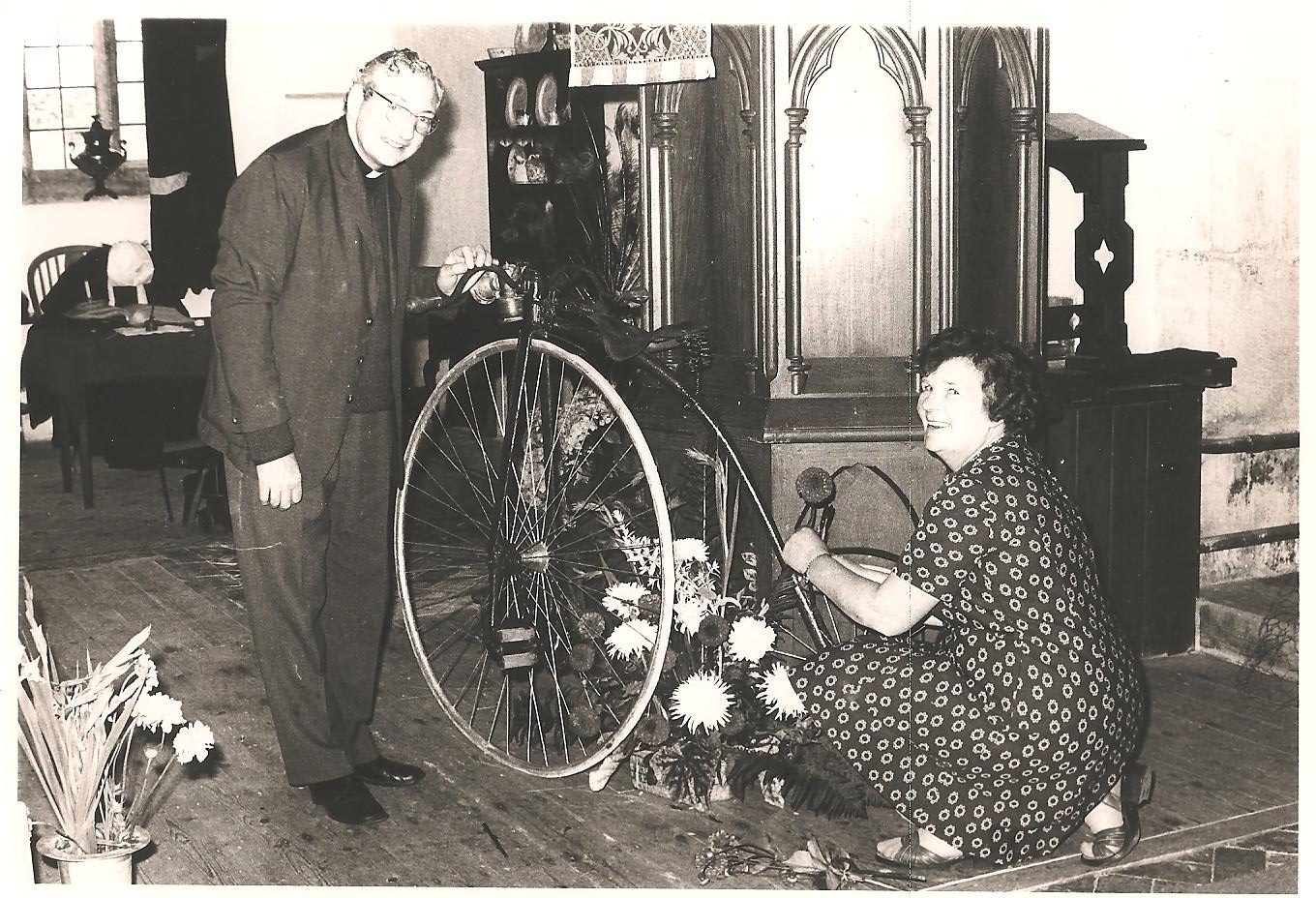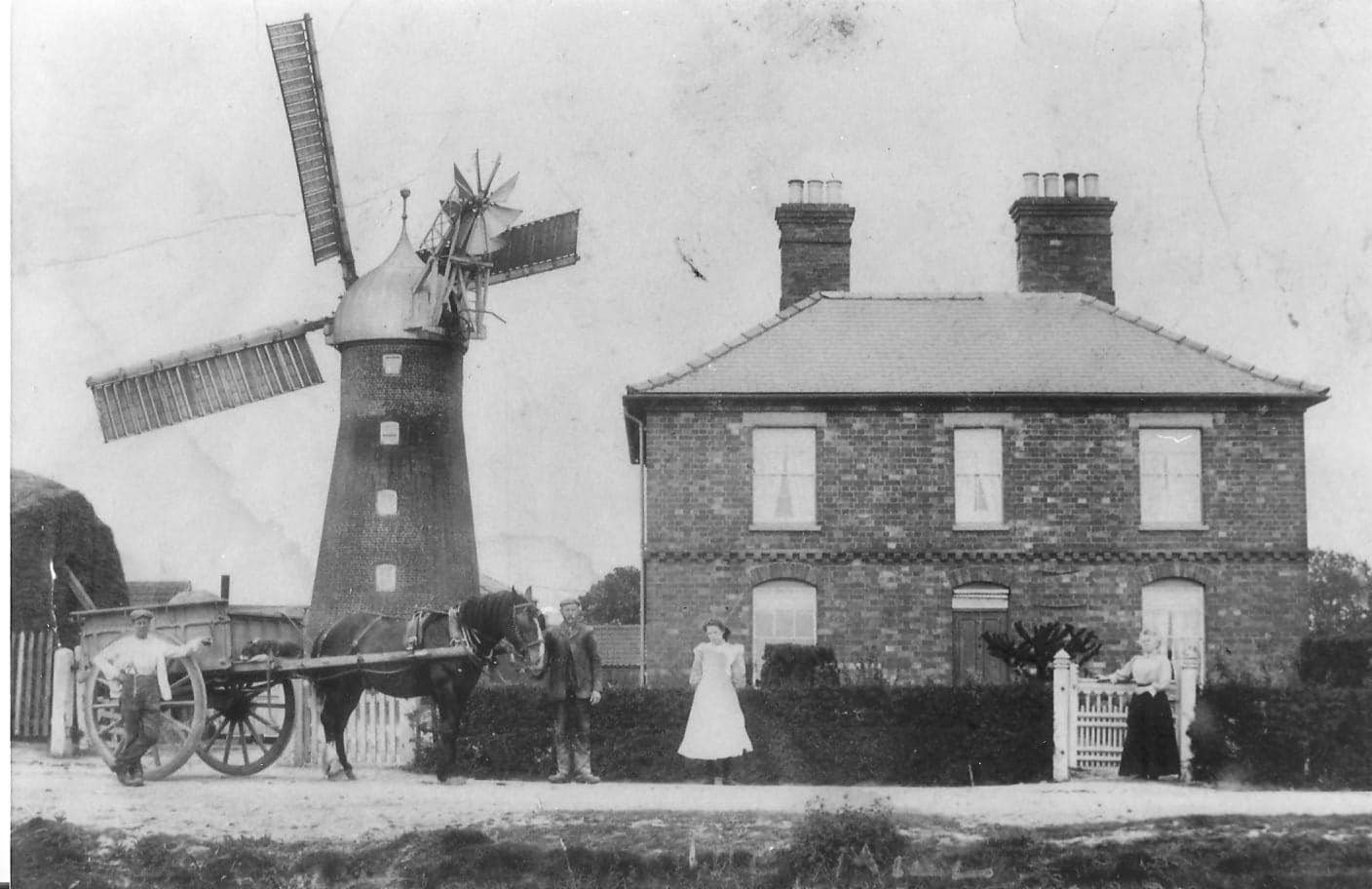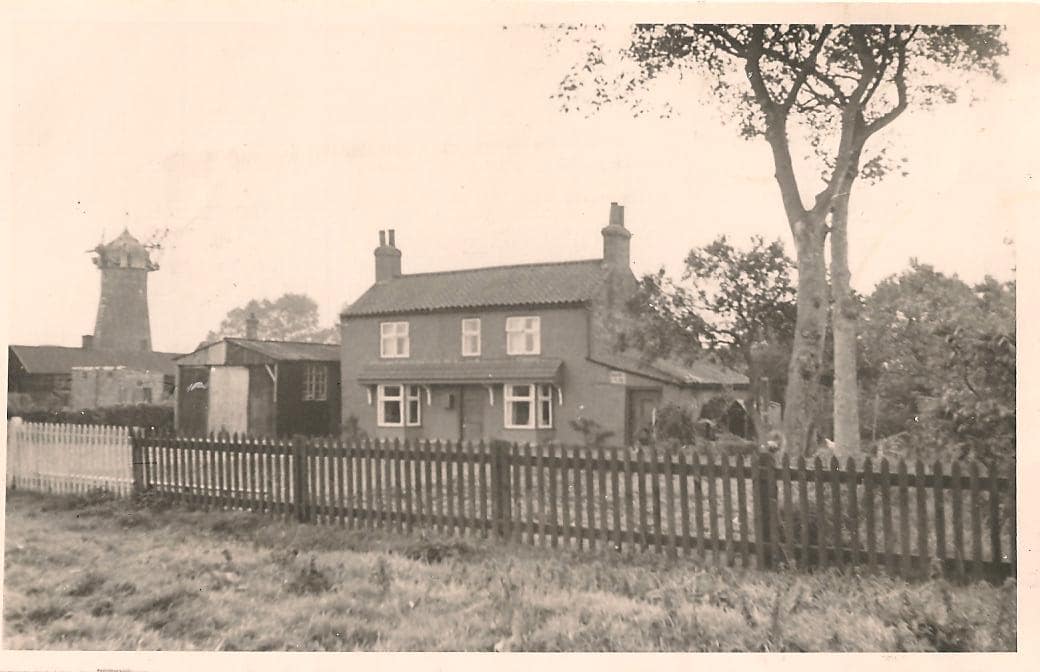
The Heritage of Grainthorpe Village
Grainthorpe is a peaceful rural community with a long history. The Romans knew the area, probably as a source of precious sea salt. The later Danish invasions of Anglo-Saxon England probably included someone called Germund whose little settlement, or “Thorpe” was established here in pre-Norman times, giving the village it’s earliest name. It was in the Domesday Book of 1086, that the existence of Germundthorpe was first recorded. The lands were divided between the King, the bishop of Durham and William de Perci. Evidence of changes to village life can be seen around the village.
Tithe Barn
Tithe Farm stands to the east of St Clements church. Parts of this interesting house date from the 15th Century, although there have been many alterations since. A plaque on the gable with the date 1569 records one such, with an image of a woolsack, perhaps indicating the source of the owner’s wealth. The farm used to be called “College Farm”, because it, with the church living, was owned for many years by Magdalene College Cambridge. The current name is taken from the farm’s fine barn, one of the remaining few in the county, where the obligatory offerings or “tithes” to the church by the local farmers were stored.


Buttgate
At the end of Church Lane, turn left onto Buttgate. The “butts” were the place where local men would have to go, by law, to practise their archery skills in Middle-age England. “Gate” is an old Danish word for road. There is evidence of mediaeval “rig and furrow” system where the villagers shared three large fields in cultivated strips. To the right of Buttgate, on the seaward side, the low mounds in the distance are the remains of the “salterns”, spoil tips from the salt-making industry which provided wealth and employment to the area until at least the time of Queen Elizabeth I.
Grainthorpe House and Stables
Grainthorpe House is located on Buttgate, and is notable for its fine range of 19th Century outbuildings, with especially fine stables, which are Grade II listed. At the end of Buttgate stands the former Village Post Office and stores, now a private residence, which dates from the mid-19th Century. For many years it was owned and run by the Sowby family, who were very influential in village life.
Millenium Stone
The Millenium stone was designed by Stuart Smith and erected by the Parish Council to mark the special occasion. Beneath the road here flows the Swine Dyke, which ran down to Grainthorpe’s own little port of Swine, near today’s Sea House Farm from where local produce was shipped and supplies brought in through Grainthorpe Haven until Tudor times.
Horns Cottage
On the corner of Poor’s End, just off the high Street stands Horns Cottage. It has been well renovated, and is a good example of the type of two room farm labourer’s cottage, with a steeply pitched roof and what would have originally been “mud and stud” walls.
The War Memorial
The site of the war memorial was once the village “pinfold”, where stray animals were put by the Pinder, a Manor Court Official, until collected by their owners.
The Forge
The old village blacksmith shop is just off the High Street in Chapel Lane, and has the old anvil in front of it. Before that, this small house was once the first village school, endowed by George Lill in 1819. Previous to this, the house was one of the earliest Methodist chapels in the district.
Village Windmill
The remains of the 19th Century village windmill are situated on the Main Road, it was of the tower type with four sails. The mill was owned and worked by the Borman family for most of its working life.
Grainthorpe Hall
Grainthorpe Hall is a very impressive Grade II listed building and was built in the early 18th century. Another storey was added in 1790, and the hall has a fine original staircase.
Grainthorpe School
The present school was built in 1852, and cost £287.00!
Fen Farmhouse
This Grade II listed building is an unusual L shaped thatched and timber framed farmhouse and dates from the 17th century.
Bluebell Cottage
This cottage was built on the site of an older building which, it is rumoured, was once the Bluebell Inn, a haunt of smugglers. Perhaps a little brandy found its way to the parson in the Vicarage across the meadow – a fine house in, a secluded location hidden amongst the trees, it was built in 1816 and extended in 1830.
Taken from the “Grainthorpe Heritage Trail” prepared for the Grainthorpe Festival of Art i 2009 by Ruairidh Greig, with acknowledgements and thanks to Peter Morris, for generously sharing his extensive knowledge of village history.

Grainthorpe Heritage Group
This is a dedicated team of volunteers who are working together to discover the history and protect the heritage of St Clements Church and it’s churchyard. This includes graffiti and gravestone surveys, being trained as tour guides for visitors – very sociable and rewarding – if you are interested in getting involved please contact Mary-Anne Drinkel 01472 388825.



